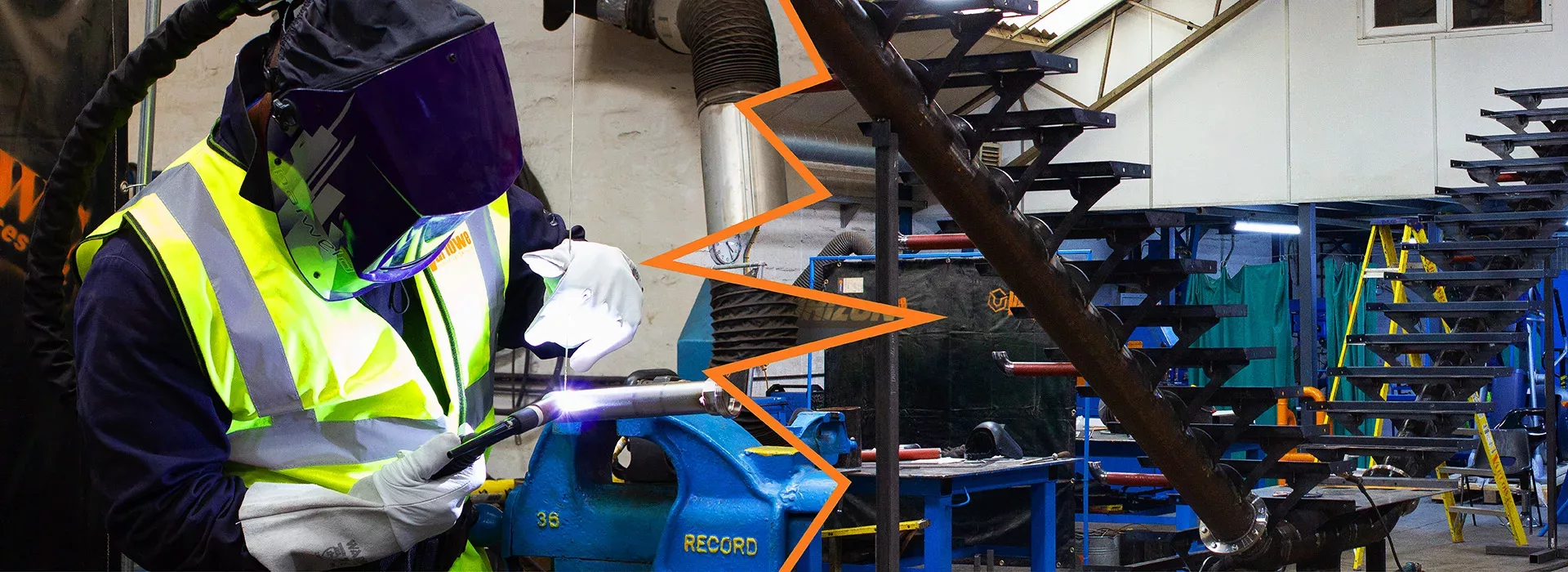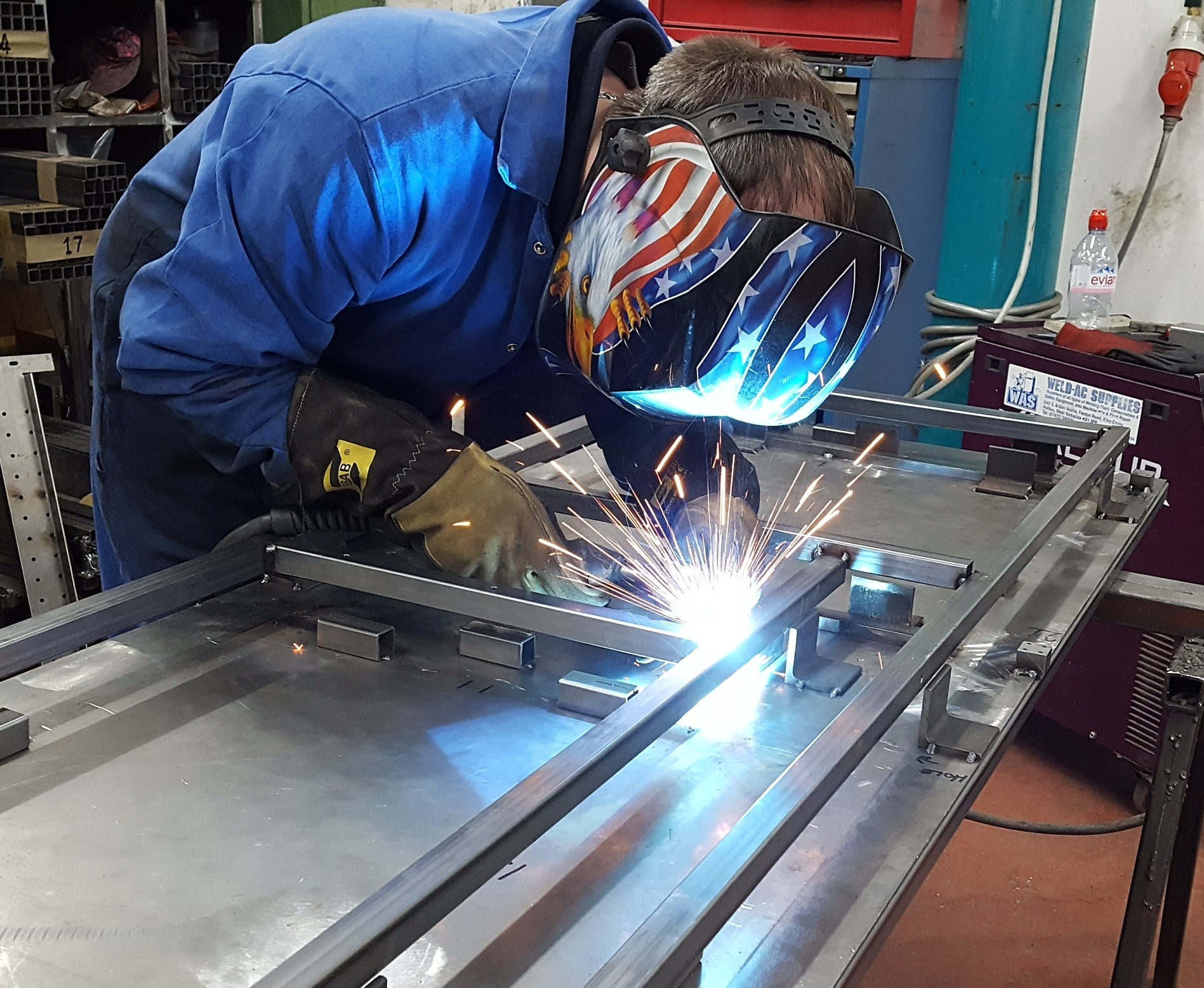Why misalignment occurs and how Belgrade Fabrication handles it
Typical Welding Repair Issues and Exactly How to Address Them Efficiently
Welding repair work commonly experience a variety of problems that can threaten the stability of the end product. Common problems include inadequate penetration, porosity, and misalignment, among others. Each issue offers unique obstacles that need specific methods for resolution. Recognizing these issues is important for welders aiming to enhance their results and skills. This discussion will explore these usual welding fixing concerns and efficient methods to resolve them.
Inadequate Infiltration
Poor penetration takes place when the weld metal stops working to totally fuse with the base product, leading to weak joints and prospective architectural failings. This problem usually stems from insufficient warmth input, inaccurate electrode angle, or improper welding rate. Welders may come across poor penetration because of a miscalculation of the required specifications for a particular product thickness or kind. Additionally, contamination on the base product's surface area can impede effective bonding, worsening the trouble. To attend to poor infiltration, welders ought to assure proper settings on their tools and preserve a clean job surface area. Regular assessment of welds is advised to recognize any shortages early, permitting prompt modifications and the prevention of jeopardized architectural honesty in welded assemblies.
Porosity
Porosity is a typical defect in welded joints that shows up as little gas bubbles trapped within the weld metal. This issue can endanger the honesty of the weld, bring about decreased toughness and prospective failing under tension. Montana Mobile Welding and Repair Fabrication. Porosity commonly develops from contamination, dampness, or improper welding strategies, which enable gases to escape into the liquified weld swimming pool. To resolve porosity, welders should assure proper surface area preparation, maintain a clean workplace, and utilize appropriate welding specifications. Additionally, choosing the appropriate filler material and protecting gas can reduce gas entrapment. Routine examination and screening of welds can assist recognize porosity early, ensuring timely restorative actions are taken, thereby preserving the top quality and dependability of the bonded structure
Misalignment
Imbalance in welding can occur from numerous variables, consisting of inappropriate configuration and thermal development. Comprehending the source is essential for efficient resolution. Several modification strategies are available to straighten components and assure architectural honesty.
Reasons of Imbalance
Welding misalignment frequently comes from a selection of underlying issues that can endanger structural stability. One key cause is inappropriate fit-up of parts before welding, which can bring about voids and uneven surfaces. Variations in thermal development throughout the welding process can additionally lead to distortion, especially if the products being joined have various coefficients of expansion. Additionally, poor fixturing and securing might fall short to hold parts safely in place, causing movement throughout welding. Improperly conserved devices, consisting of welding machines and devices, may present incongruities in the weld grain, further adding to misalignment. Ultimately, operator error, coming from insufficient training or experience, can also play a considerable duty in developing misaligned welds.
Adjustment Techniques Readily Available
Addressing imbalance efficiently needs a combination of rehabilitative techniques customized to the specific issues at hand. One usual technique is using fixtures or jigs to hold components in the proper setting throughout welding, making certain consistent placement. In addition, pre-heating the products can help in reducing distortion and boost fit-up. For substantial imbalance, mechanical realignment methods, such as utilizing hydraulic jacks or clamps, can be used to fix the setting before welding. Post-weld warm treatment may also be required to soothe stress and anxieties caused by misalignment. Ultimately, mindful evaluation and adjustment throughout the setup phase can protect against misalignment issues from becoming substantial problems, promoting a smoother welding procedure and improving total architectural integrity.
Distortion
Distortion is an usual difficulty in welding that can occur from various elements, including unequal heating & cooling. Recognizing the root causes of distortion is essential for implementing effective prevention methods. Resolving this problem not only boosts structural honesty however also enhances the general top quality of the weld.
Causes of Distortion
When subjected to the intense warmth of welding, products commonly go through adjustments that can lead to distortion. This phenomenon mostly arises from thermal growth and tightening during the welding process. As the weld area heats up, the material increases; upon air conditioning, it gets, which can develop internal tensions. Furthermore, uneven home heating throughout a workpiece can aggravate these stress and anxieties, leading to bending or flexing. The type of material likewise plays a considerable duty; steels with varying thermal conductivity and coefficients of development may react in a different way, leading to unpredictable distortions. Bad joint style and inadequate fixturing can contribute to imbalance throughout welding, raising the possibility of distortion. Understanding these reasons is important for reliable welding fixing and prevention approaches.
Avoidance Techniques
Reliable prevention techniques for distortion throughout welding emphasis on managing warmth input and ensuring proper joint style. Maintaining a consistent warm input aids to lessen thermal expansion and tightening, which can cause distortion. Utilizing strategies such as preheating the work surface can likewise reduce the temperature slope, promoting uniform home heating. Furthermore, picking suitable joint layouts, such as T-joints or lap description joints, can boost stability and reduce stress concentrations. Implementing appropriate fixturing to safeguard the workpieces in area better aids in maintaining alignment during the welding process. Finally, staggered welding series can distribute warm a lot more equally, preventing localized distortion. By applying these approaches, welders can substantially lower the chance of distortion and boost the general quality of their welds.
Breaking
Breaking is a common problem run into in welding repairs, commonly resulting from different variables such as improper cooling prices, material selection, or inadequate joint prep work. The incident of cracks can considerably endanger the try this web-site honesty of the weld, leading to possible failings throughout operation. To resolve this problem, welders have to initially assess the origin causes, making certain that products work and properly chosen for the specific application. Furthermore, controlling the cooling rate during the welding procedure is vital; quick cooling can cause anxiety and result in cracking. Appropriate joint design and preparation additionally add to reducing the threat. Executing these approaches can improve weld top quality and sturdiness, ultimately reducing the likelihood of breaking in completed weldments.

Incomplete Blend
A significant problem in welding repair work is incomplete fusion, which takes place when the weld steel does not appropriately bond with the base product or previous weld passes - Montana Mobile Welding and Repair Fabrication. This defect can bring about weaknesses in the joint, potentially jeopardizing the stability of the welded structure. Aspects contributing to incomplete fusion include not enough warmth input, incorrect welding technique, and contamination of the surface areas being joined. To resolve this concern properly, welders should assure correct pre-weld cleaning and surface area preparation, as well as change their welding parameters to achieve sufficient infiltration and combination. Regular evaluation throughout the welding procedure can additionally assist identify incomplete fusion early, permitting prompt rehabilitative measures to boost the total high quality of the weld
Overheating
While welding fixings can enhance architectural honesty, overheating offers a significant difficulty that can cause material deterioration. Excessive heat during welding can modify the mechanical buildings of metals, leading to minimized strength, enhanced brittleness, and warping. This sensation is particularly important in high-stress applications where architectural dependability is paramount. Identifying overheating can entail aesthetic assessments for discoloration or distortion, in addition to monitoring temperature throughout the welding procedure. To minimize the risks related to getting too hot, welders need to use suitable techniques, such as controlling warm input, readjusting travel speed, and using appropriate filler products. Furthermore, carrying out pre- and post-weld warmth treatments can assist recover product residential properties and enhance the overall top quality of the repair, guaranteeing long-term efficiency and security.
Regularly Asked Concerns
What Are the Common Indicators of a Welding Issue?

Exactly How Can I Test My Welds for Top quality?
To test welds mig welder for quality, one can utilize aesthetic evaluations, ultrasonic testing, and radiographic methods. Each method guarantees structural stability, recognizes defects, and confirms adherence to specified criteria, eventually improving the reliability of the bonded joints.
What Security Preventative Measures Should I Take While Welding?
When welding, one need to focus on safety by wearing suitable personal safety tools, making sure correct ventilation, securing combustible materials away, maintaining a clean work space, and being aware of surroundings to stop crashes and injuries.
Can I Repair a Weld Without Redesigning the Entire Joint?
Repairing a weld without redoing the whole joint is feasible, depending upon the damages (Montana Mobile Welding and Repair Belgrade). Methods such as grinding, including filler material, or using a welding process can successfully attend to specific flaws while maintaining the surrounding framework
What Equipment Are Essential for Effective Welding Repairs?
Essential tools for efficient welding repairs include a welding equipment, cord brush, mill, safety equipment, clamps, and filler materials. Each tool plays a vital duty in making sure top quality and security during the repair service procedure. Porosity generally develops from contamination, wetness, or incorrect welding methods, which permit gases to run away right into the liquified weld swimming pool. Inadequately kept devices, including welding devices and tools, may introduce incongruities in the weld grain, further contributing to misalignment. When subjected to the extreme warm of welding, materials usually undertake changes that can lead to distortion. Splitting is a typical issue run into in welding repairs, often resulting from various factors such as incorrect air conditioning prices, material selection, or inadequate joint preparation. A considerable problem in welding repair work is insufficient blend, which takes place when the weld steel does not sufficiently bond with the base material or previous weld passes.